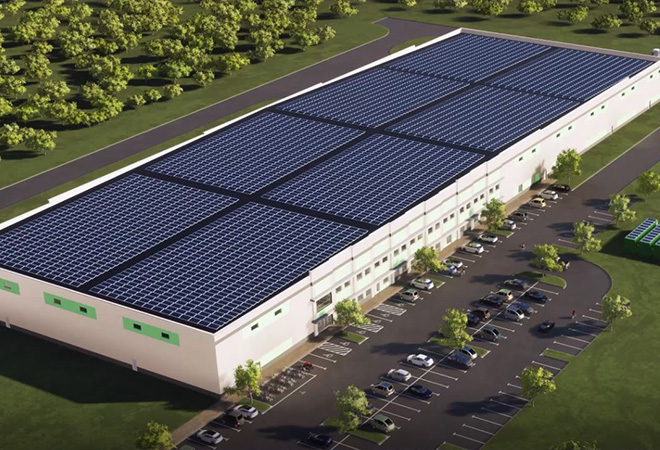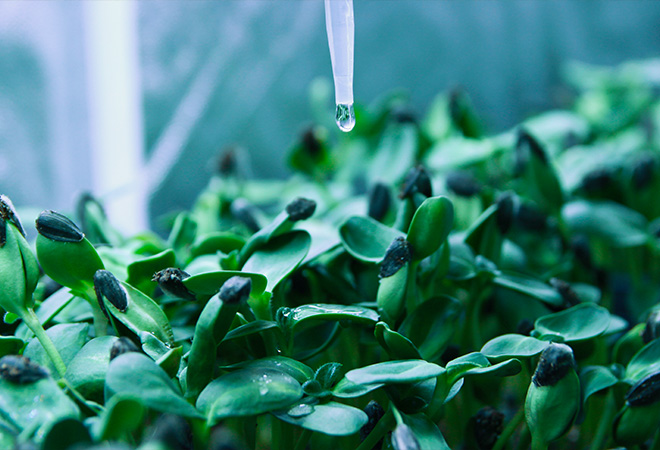The ecological footprint left behind by the beauty industry is undeniable, but the pertinent need for more environmentally friendly solutions is also producing compelling results.
Contract manufacturer Capsum has debuted a solar-powered, fully sustainable, LEED (Leadership in Energy and Environmental Design)-certified production site in Austin, which boasts a production capacity of 40 million units annually and offers a workplace for up to 250 employees. It will be the home of production for microfluidic technology-driven creations, a service which the company has lent to the likes of L’Occitane and Chanel for skincare products.
Microfluidic technology sees the manipulation of water and oil through exceptionally small tubes, which allows for the creation of unusual visual presentation and textures such as pearls, bubbles, and microcapsules. “Our job is to help turn the dreams of cosmetic brands into reality. To create—thanks to microfluidics—incomparable, beautiful, new products that consumers will immediately be drawn to and fall in love with,” Capsum CEO & founder Sébastien Bardon tells BeautyMatter.
We sat down with Bardon to discuss the potential of indoor farming.


What was the impetus for building the facility in Austin and how long did the process take from start to finish?
Capsum built its sustainable manufacturing site in Austin, TX, in order to support its growth in the United States. Our company started to work for American beauty brands in 2013, creating Capsum Inc in 2016. Facing a growing success, with the company growing steadily at a rate of about 50% per year since the last 10 years, plus our manufacturing facility in France reaching full capacity, we decided to set up our second manufacturing site in the US in 2017. The process lasted three years between the impetus and opening of the production site.
What were the processes and challenges of creating it?
One of the first challenges was to find the location in the United States. The goal was to design a plant to fulfill all good manufacturing practices and minimize impacts on the environment with two major goals: no energy stress, as we were looking for a solar-powered plant, and no hydric stress, since we were looking for a source of salted water to desalinize and avoid any competition with human/agriculture needs in water. Austin is the perfect home for this project: ideally located for solar power, central, with skilled and dynamic labor, and supported by very active mayor Mr. Steve Adler. The city also has a history of welcoming green initiatives.
Another challenge was to transfer our expertise from France to the United States during the COVID period. The uniqueness of our microfluidic textures is partly due to our unique industrial tool, designed and created by and at Capsum. Due to lockdown and travel ban, our experts were not allowed to come to Austin easily but we managed to find innovative solutions such as the use of high-tech smart goggles to connect teams on both sides of the planet to build and use our machines.
What is the current capacity and the capabilities of your indoor farming facility?
Our indoor vertical farm represents 6,500 square feet out of our 126,000-square-foot facility, hosting seven fully independent cells regarding climate control, lighting, and fertigation. We use precision indoor farming to control the plant's environment to optimize the production of interesting active molecules. Thus we grow and extract sustainable and substantiated actives. As we are not dependent on climate, seasons, nor soil, we can grow plants rapidly. As an example, our first active ingredients are extracted from microgreens, which require only 10 to 15 days of growth and a few extra days for extraction. Harvested and extracted immediately after, the freshness of the plants is preserved as well as their content in active molecules.
What does the future of sustainable beauty entail?
Rethinking the way we create cosmetics to be more eco-friendly and skin friendly. From seed to bottle, our LEED-certified plant combined with our precision indoor farm allow us to create highly sustainable and locally produced cosmetics for the brands we work with. Our clean formulas help to fulfill consumers and brands expectations in terms of transparency.
Packaging is also a big issue because it is the only remaining piece at the product end-of-life. We’re currently working to source sustainable packaging and collaborating with brands to identify the best options combining performance and recyclability.
As an example, during the inauguration of our Austin site, we presented a concept of a refill station created by our engineers who are used to designing custom machines for the production of microfluidic textures. Maybe this type of concept limiting the waste of packaging is also a way to make skincare more sustainable.